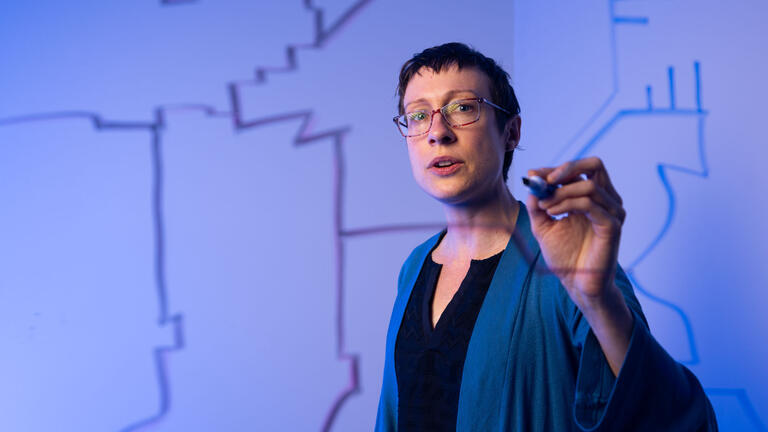

Take 5: Computer Science Professor Takes on Gerrymandering
1. What do you teach at USF?
I am teaching AI for Redistricting, using AI tools to detect gerrymandering and improve the redistricting process. It’s a computer science class open to both undergraduates and graduate students. We cover AI methods to detect when gerrymandering is happening. I also taught a class this year called Data Structures and Algorithms, another computer science class.
2. What is gerrymandering?
Gerrymandering is when election districts are drawn to disenfranchise a group of voters or dilute the power of a group of voters. Another perspective on gerrymandering is that it gives a boost to a group of voters to have the outcome they want. There’s partisan gerrymandering and racial gerrymandering.
3. Is it harmful?
Well, it dilutes the voting power of some people, so I would say yes. People need to have their voices heard, and that means they have to have power in the voting process.
4. Your AI tool is being used to analyze redistricting maps created since the 2020 census. How does it work?
When mapmakers draw a partisan gerrymander, they must use two key pieces of information. First is the partisan data of whether a set of voters leans toward Democrats or Republicans, which the mapmakers infer from the percentage of votes that went to a Democrat or Republican in the last presidential election. Second is the geographic data of where those voters are located on the map. The AI tool, called GEO for geography and election outcomes, assigns a score, based on partisan data and geographic data, to the Democrats and the Republicans in a voting district. If one party has a very low score and the other party has a high score, then probably that map has been optimized for the party with the low score.
5. You’re passionate about supporting underrepresented students in STEM fields. Why?
For me, a lot of what I chose to study is about where I feel comfortable. I know how big of an impact it has if you want to study something and the people around you don’t take you seriously. I’ve worked on grant proposals for students underrepresented in the sciences. It’s important to make sure that students who want to study something and are very capable of studying it are able to do that. It takes a lot of work and effort to study math and computer science and physics, and students need to feel like they’re at home. We want to have excellent scientists who do good work. It’s important to have different voices in different science fields.

Featured in USF Magazine
This USF News story was published in USF Magazine, where you can find feature stories about university life, alumni Class Notes, and information about events at USF.